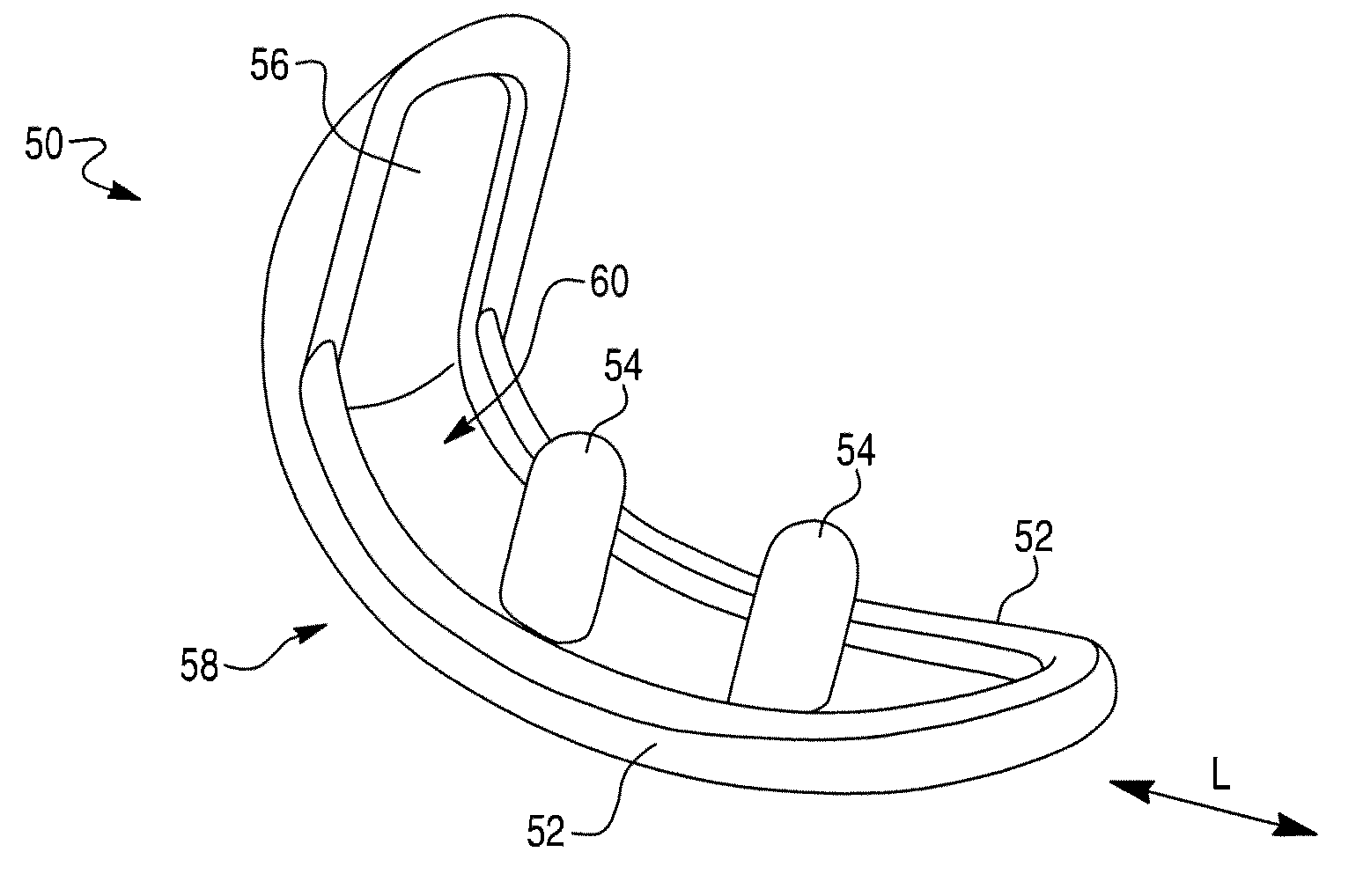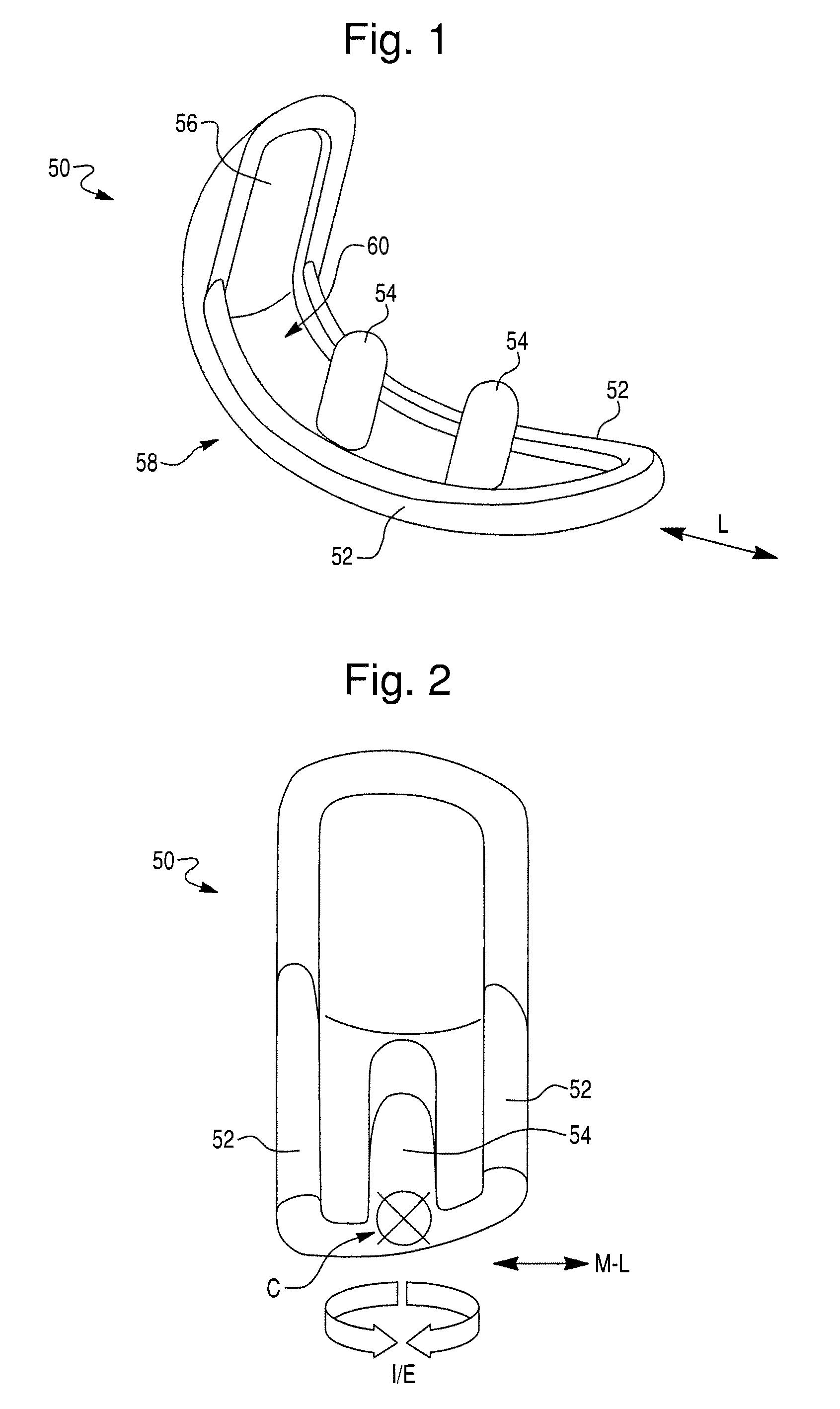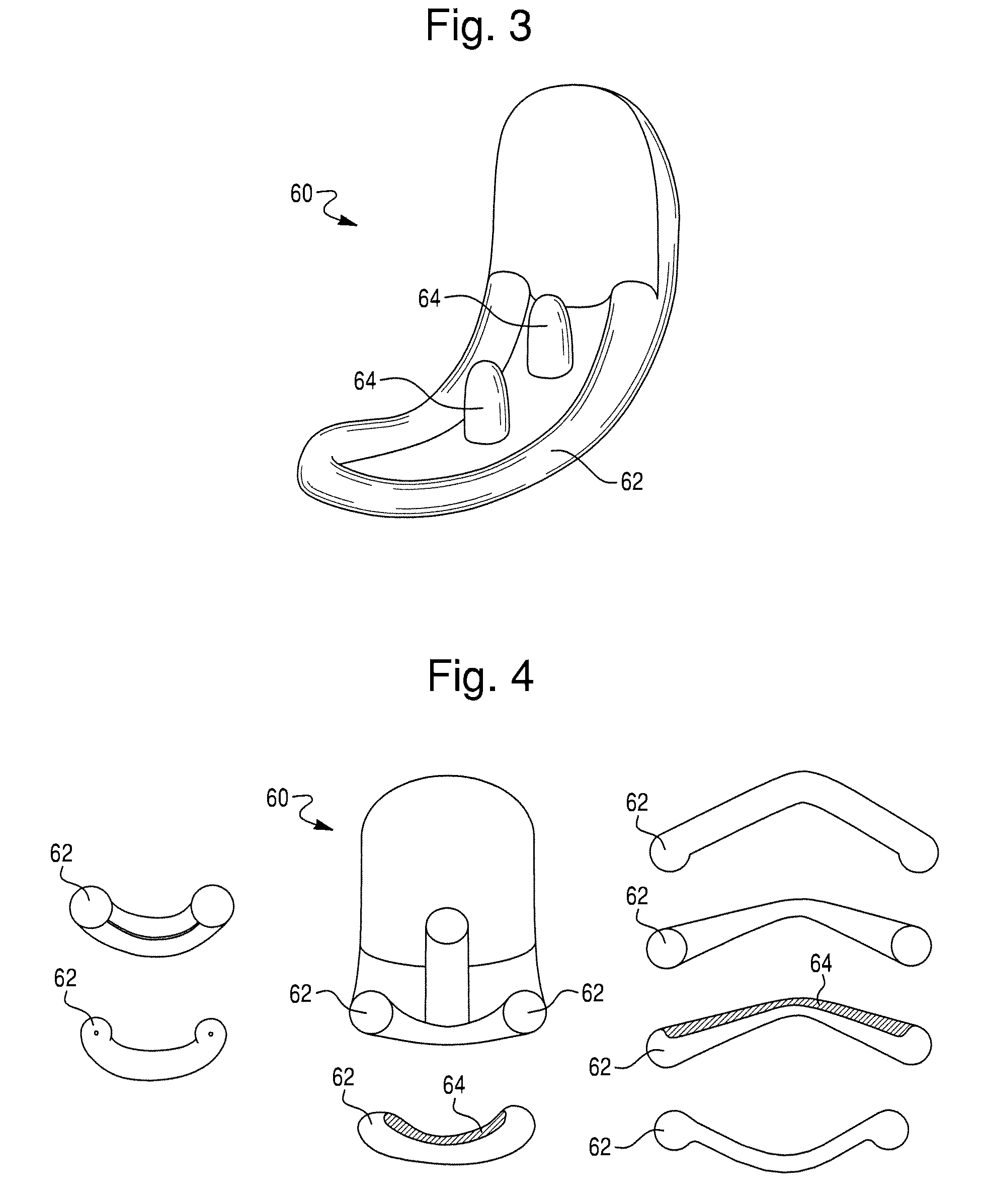Prosthetic device for knee joint and methods of implanting and removing same
a knee joint and prosthesis technology, applied in the field of knee joint prosthesis, can solve the problems of multiple cutting tools, long bone preparation time, and difficulty in keel of a conventional prosthesis devi
- Summary
- Abstract
- Description
- Claims
- Application Information
AI Technical Summary
Problems solved by technology
Method used
Image
Examples
Embodiment Construction
[0051]Presently preferred embodiments of the invention are illustrated in the drawings. An effort has been made to use the same or like reference numbers throughout the drawings to refer to the same or like parts.
Overview
[0052]A prosthetic device for a knee joint according to the present invention preferably is a unicompartmental component for replacement of a portion of the knee joint (such as a compartment of the femur), however, it also could be a total knee component. The prosthetic device also could be, for example, a patellofemoral component, a tibial baseplate, or a tibial inlay. The prosthetic device preferably includes a body portion for attachment to a bone of the knee joint and one or more keels.
[0053]The body portion of the prosthetic device can be formed from materials that are conventional in the art, or of other materials. The body portion can have a bearing surface that can be configured to replace at least a portion of the bone of the knee joint. The bearing surface...
PUM
 Login to View More
Login to View More Abstract
Description
Claims
Application Information
 Login to View More
Login to View More - R&D
- Intellectual Property
- Life Sciences
- Materials
- Tech Scout
- Unparalleled Data Quality
- Higher Quality Content
- 60% Fewer Hallucinations
Browse by: Latest US Patents, China's latest patents, Technical Efficacy Thesaurus, Application Domain, Technology Topic, Popular Technical Reports.
© 2025 PatSnap. All rights reserved.Legal|Privacy policy|Modern Slavery Act Transparency Statement|Sitemap|About US| Contact US: help@patsnap.com



